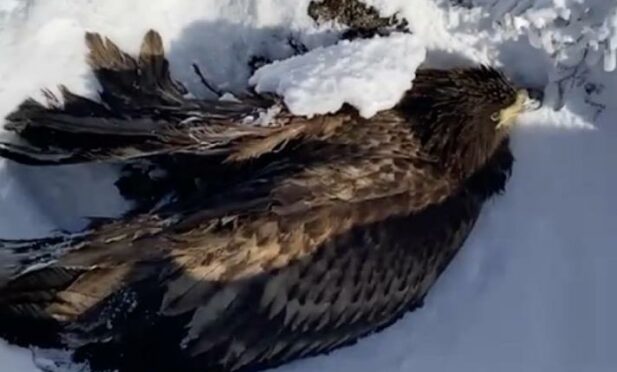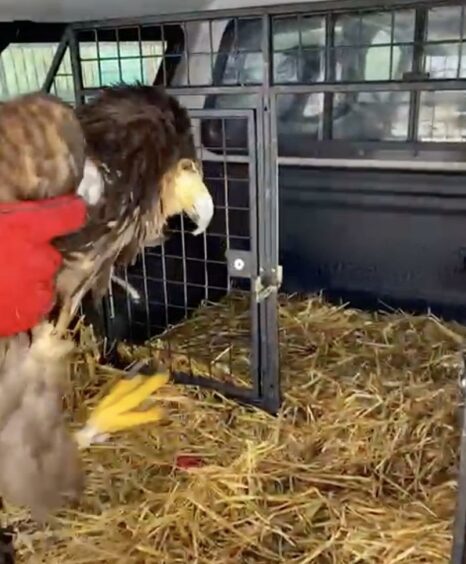A young sea eagle has been put down after being found seriously injured on a Highland estate.
A gamekeeper found the ringed bird on Saturday, hobbling in the snow and unable to fly due to a badly broken left wing.
The raptor is thought to have suffered the injury either in a collision with a tree or fence, or in a fight for territory with another eagle.
After finding the “struggling” bird, the gamekeeper called for help from his colleague and carefully went over to see if he could help the bird.
He managed to lift it into a safe compartment of his all-terrain vehicle and took it to the vet.
However, due to the severity of the eagle’s injury – which would prevent it from hunting – the vet decided to put it down.
‘It was clear it was incapable of flying’
The head gamekeeper, who wanted to remain anonymous, said: “I came across the eagle which was hobbling slowly in the snow and was clearly in a distressed state. It came to rest in the snow and was immobile.
“On close examination, it was clear that the bird had suffered a very serious blunt traumatic injury with its left wing.
“Along with one of my colleagues, we removed the bird to a local veterinary clinic who very kindly dealt with the matter as an emergency on late Saturday afternoon.
“We took photos and videos of the bird. It was clear it was incapable of flying. We were very sorry to learn that the vet was unable to save it”.
Scottish Gamekeepers Association chairman Alex Hogg said: “The gamekeepers did exactly the right thing in the situation. It is just a shame the poor bird didn’t survive.”
The matter was also reported to Police Scotland’s wildlife team.
A police spokesman said: “Officers were made aware of a white-tailed eagle having been found injured at an estate in the Inverness-shire area on Saturday, 19 February, 2022.
“No criminality has been established at this time and inquiries are ongoing.”
Sea eagles, or white-tailed eagles, are Scotland’s largest birds of prey. Also known as “flying barn doors” because of their 8ft wingspan, they were hunted to extinction in Scotland by 1918, when the last native bird was shot on Shetland.
The giant raptors were reintroduced to Scotland on the Isle of Rum in 1975 and by 2019 a count found there were at least 123 breeding pairs of the red listed.

